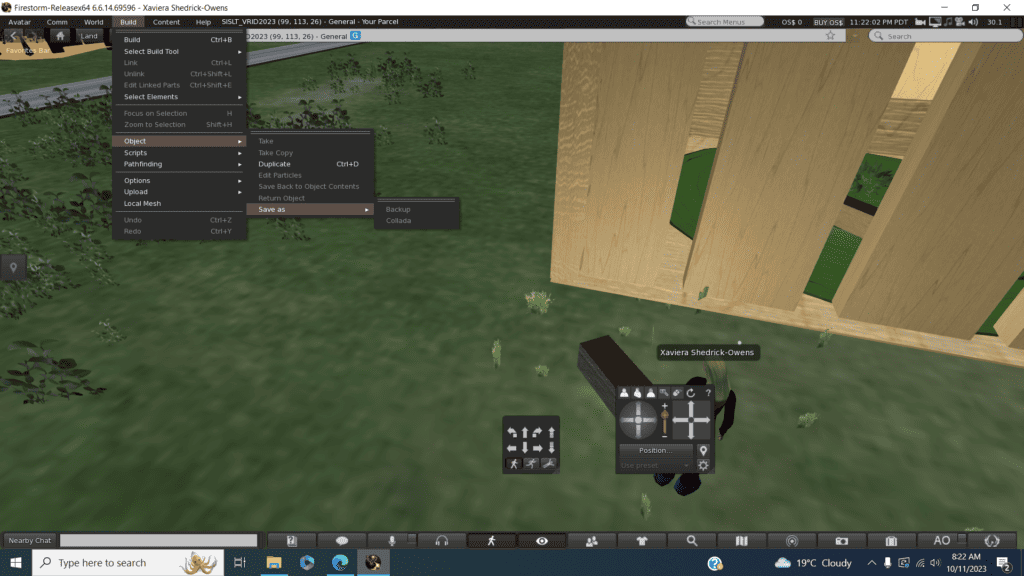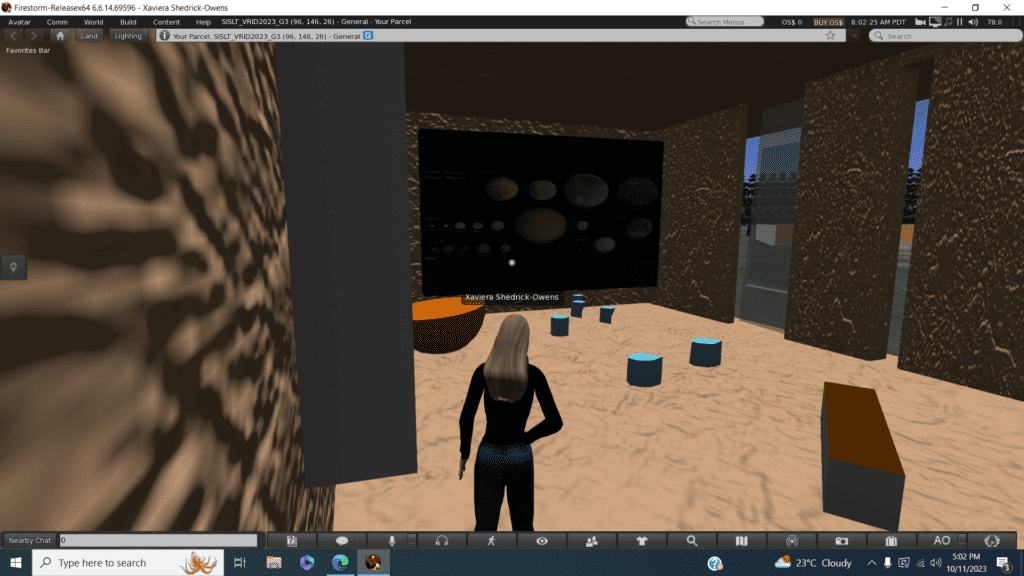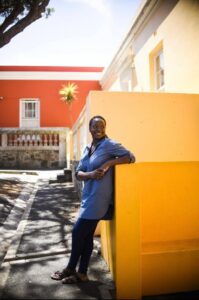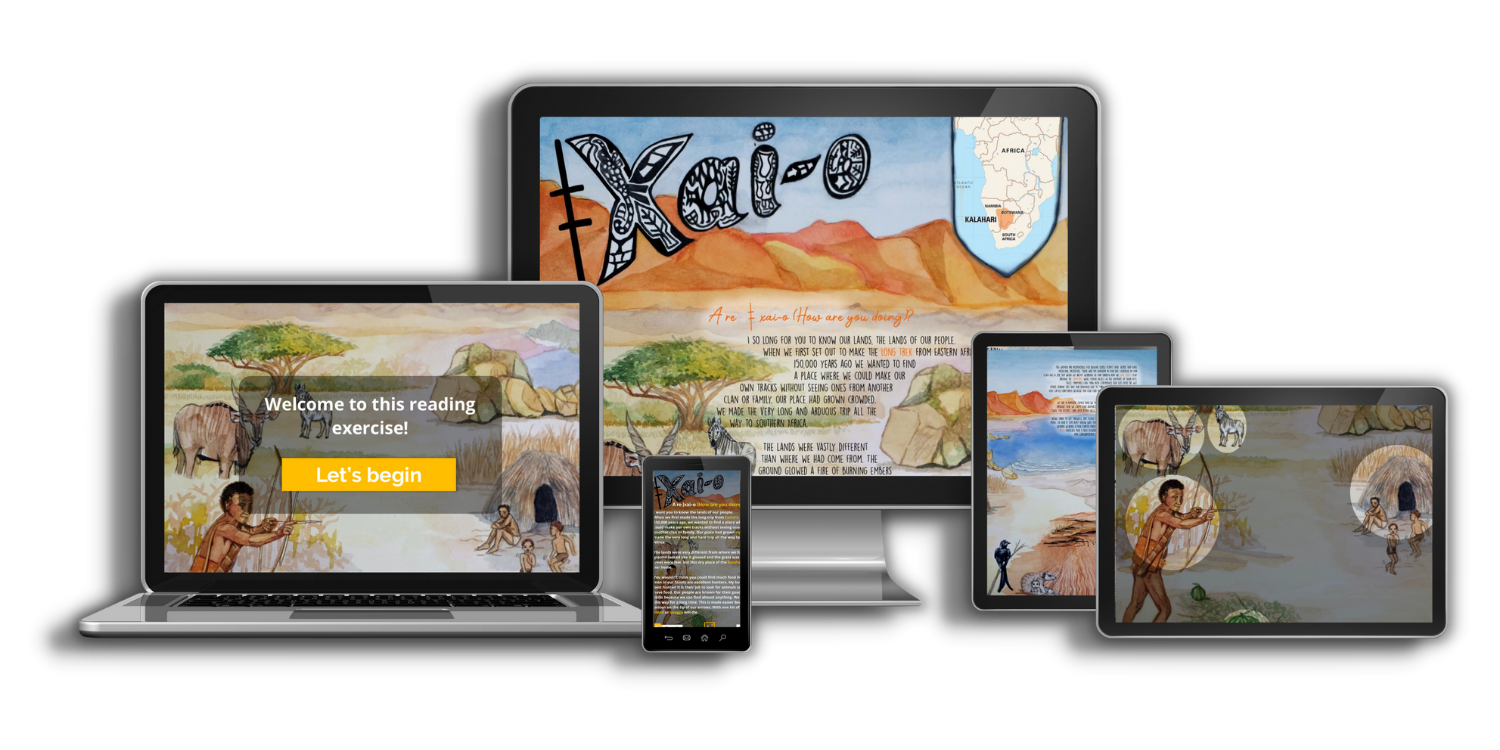I’ve started on an exciting adventure into the fascinating realms of virtual reality (VR), augmented reality (AR), and mixed reality (MR) in my continuing VR course. We are now halfway through the course, so I’d like to provide some reflections on what we’ve covered so far.
The Virtual, Augmented, and Mixed Reality Spectrum, Part 1
The first week was spent investigating the immersive technology market. We took a close look at how VR, AR, and MR vary and may be used in the classroom. This was a great way to start off a short intro that will only last two weeks.
Second Week: Virtual Reality Pedagogical Models
During the second week, we changed our attention to VR-based pedagogical paradigms. To better grasp their significance in educational settings, we investigated a number of theories and models that support efficient instruction and learning in virtual environments. I found the Discovery Learning Model by Bruner quite interesting.
OpenSim: Building and Tailoring in Weeks 3 and 4
Weeks 3 and 4 saw us rolling up our sleeves and learning the ins and outs of OpenSim item creation and modification. Blender and Unity’s familiar user interfaces make this step easier to take. With a special emphasis on language acquisition, we expertly used media components to increase the interactive nature of our productions. With only 4 weeks left, the adventure via immersive education finally began.

My OpenSim environment Creating a Village-like Effect for the Classroom (loom.com)
Blender and Object Importing into OpenSim: A Review for Week 5
In the fifth week, we went back to Blender with the guidance of our lecturer to make a doughnut, which was something I had previously accomplished the year before. This time, though, we focused on learning the ins and outs of inventory management and importing the item into OpenSim through Blender’s dae files. This week served as a helpful refresher, reiterating the significance of asset management in a virtual reality setting.

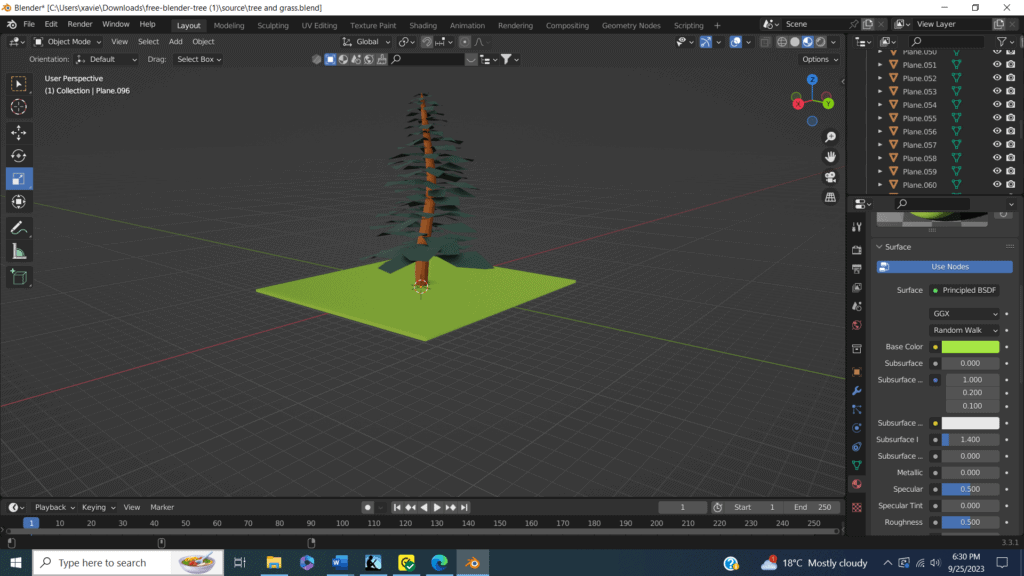
Despite having trouble relating to the assignments, I appreciate the great value of gaining these abilities. There are just 3 weeks left, but I think virtual reality (VR) will revolutionize education. There is an almost infinite number of uses for this, and the ability to make, modify, and import objects paves the way for exciting new ways to engage students in the learning process.
There are just 3 weeks left in this virtual reality course, and I’m looking forward to sharing more insights and discoveries as we explore the rapidly developing field of immersive technology.
Latter 3 weeks…Update
We dove deeper into Blender in the sixth week of the VR course, becoming fluent in the art of design with relative ease, though I still have my doubts about the platform. The highlight of the week was figuring out how to import DAE files from Blender into OpenSim without any hiccups or mistakes. As a means of setting the stage for our exploration of the virtual world, we also did a quick dive into the background of computer graphic modeling. It’s becoming increasingly clear that each week brings fresh perspectives and technical prowess, propelling us deeper into virtual reality’s exciting frontier.
The seventh week of our virtual reality course was spent exploring Mozilla Hubs and learning how to create compelling VR settings. It was a thrilling chance to learn something new and experiment with a novel medium for simulated adventures. I also had the privilege of attending Meta Connect, where cutting-edge immersive technology like Meta Quest 3 and the newest smart glasses were demonstrated, making this an especially exciting week. The ever-changing nature of this field was highlighted by the discussion of the rising popularity of devices that let users toggle between augmented reality (AR)/ Mixed reality (MR) and virtual reality (VR) experiences on the same device.
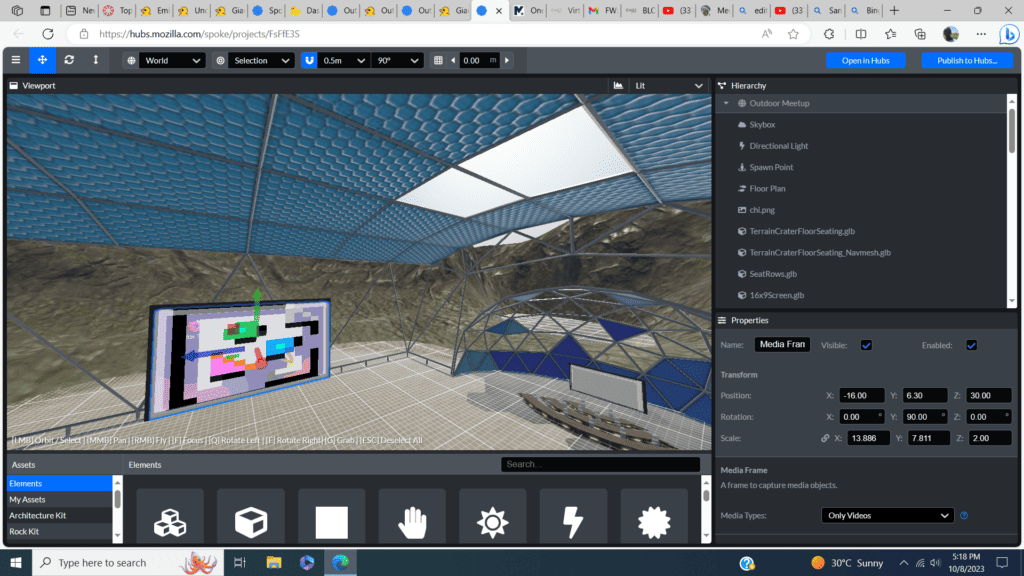
The eighth week of our virtual reality journey was pivotal because we began working on a group project with two other students, one from our department and the other from the Department of Electrical Engineering and Computer Science. We pooled our resources and expertise and built a space-themed island that incorporates all of our OpenSim educational spaces.
Before this collaborative effort, my project had centered on sharing the compelling tales of the San people. I decided to read about the origin of the world in a book titled “Moon’s Message.” Together with my talented teammates, we were able to create a themed virtual reality (VR) space that we hope will be a thrilling addition to our immersive portfolio thanks to the ability to save and import our previous environment.
Finally, during a live synchronous call with the rest of the class, we presented our final product. We used OpenSim’s 3D capabilities and Zoom’s ease of use to present our VR environment and its development process. This presentation was not only a celebration of our efforts but also an illustration of the fantastic opportunities for interaction and cooperation afforded by virtual reality.
Lasting impressions
During my investigation into the domain of virtual collaboration and its capacity for alternate learning experiences, my engagement with a Virtual Reality (VR) course has proven to be both instructive and exciting. I have acquired significant knowledge regarding the efficacy of communication in virtual environments, enabling me to effectively express ideas and engage in collaborative efforts across various cultural contexts. These insights have broader implications beyond virtual reality, encompassing virtual meetings, teleconferencing, and distant education. The course mostly centered on OpenSim for virtual reality (VR) design. However, my personal preference is Unity, a versatile and popular platform within the VR sector. This choice aligns more closely with my specific interests in building alternative learning experiences. The accessibility of virtual reality (VR) technology, due to its low barrier to entry, holds promise as it enables a broader demographic to engage with this disruptive technology, hence facilitating creativity. As the field of virtual reality (VR) progresses, the knowledge gained from these insights and individual preferences will significantly influence my trajectory in developing dynamic and groundbreaking educational experiences within the continuously increasing virtual domain.
